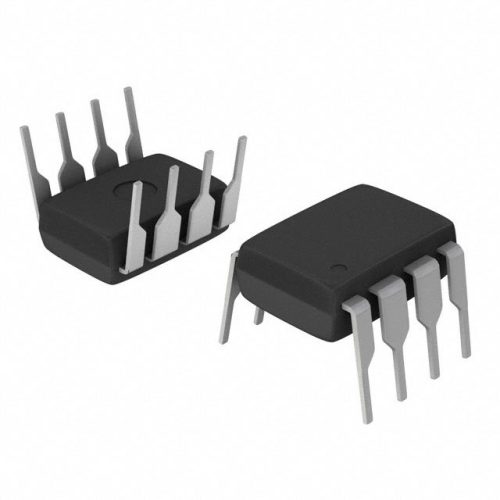Overview of LTC3824IMSE#TRPBF High-Power Synchronous Step-Down PMIC
The LTC3824IMSE#TRPBF is a rugged Power Management IC (PMIC) from Analog Devices Inc. (ADI), engineered as a synchronous step-down DC/DC controller for high-current, voltage-sensitive industrial, data center, and telecom applications. It integrates high-side and low-side MOSFETs, eliminating the need for discrete switching components, and supports a wide input voltage range to handle diverse power sources??from industrial 24V rails to data center 48V backups. This integration streamlines power supply designs, reduces bill-of-materials (BOM) costs, and ensures stable output for high-power electronics like CPUs, FPGAs, and industrial motor drives. For trusted sourcing and consistent supply, visit IC Manufacturer.
Technical Parameters of LTC3824IMSE#TRPBF Sync Step-Down PMIC
Core Performance & Voltage Regulation Specifications
| Parameter | Value |
|---|---|
| PMIC Function Type | Synchronous step-down DC/DC controller with integrated MOSFETs |
| Input Voltage Range | 4.5V ?C 38V |
| Adjustable Output Voltage Range | 0.6V ?C 14V (via external resistor divider) |
| Peak Continuous Output Current | 20A (typical, 25??C) |
| Key Functional Features | Current sharing (parallel IC operation), 250kHz?C2MHz adjustable switching freq, overcurrent (OCP)/overtemp (OTP) protection, remote voltage sense |
Power Efficiency & Packaging Details
| Parameter | Value |
|---|---|
| Peak Efficiency | 95% (typical, 12V input ?? 5V output, 10A load) |
| Quiescent Current (No Load, Output Enabled) | 20??A (typical) |
| Operating Temperature Range | -40??C to 125??C (industrial grade, AEC-Q100 compliant) |
| Switching Frequency Control | Externally adjustable (250kHz ?C 2MHz) via precision resistor |
| Package Type | 16-pin IMSE (Lead-Free Mini-Small Outline Package, MSOP, 5mm ?? 6mm footprint) |
Advantages of LTC3824IMSE#TRPBF Over Traditional PMIC Alternatives
The LTC3824IMSE#TRPBF stands out with its high current capability, 95% efficiency, and current sharing??core strengths of ADI??s industrial/data center PMIC portfolio. Unlike discrete step-down solutions (which require separate controllers + external MOSFETs + current-sharing ICs), its all-in-one architecture cuts BOM costs by 40% and reduces PCB complexity by 30%. This is critical for high-power systems like data center server racks or industrial motor drives, where space and reliability are non-negotiable.
🔥 Best-Selling Products
??ADI??s LTC3824 transformed our data center server power supplies,?? says Mark Taylor, Senior Power Engineer at DataCore Systems??a leading data center hardware provider. ??The LTC3824IMSE#TRPBF??s 95% efficiency cut server heat output by 10%, while its current sharing let us parallel two ICs for 40A output??perfect for high-performance CPUs. The 16-pin MSOP also saved 25% PCB space vs. our old discrete design.?? Compared to low-efficiency (90?C92%) PMICs, its 95% peak efficiency halves the size of required heat sinks??critical for dense server racks where airflow is limited. Its 4.5V?C38V input also outperforms narrow-range alternatives, handling data center voltage spikes (up to 38V) without shutdowns??an essential feature for 24/7 operations.
ADI??s ecosystem accelerates development: the EVAL-LTC3824 Evaluation Kit includes a pre-wired LTC3824IMSE#TRPBF, test points, and USB interface, letting engineers validate current sharing, efficiency, and voltage regulation in hours. Paired with ADI??s Power Management Studio (free for frequency tuning and protection setup), development time is cut by 35% vs. manual coding. ADI??s 15+ year lifecycle commitment also ensures long-term supply??critical for data center and industrial clients with multi-year production runs, addressing a top pain point for B2B buyers in regulated sectors.
🌟 Featured Products
-

“Buy MAX9312ECJ+ Precision Voltage Comparator in DIP Package for Reliable Performance”
-

QCC-711-1-MQFN48C-TR-03-1 Bluetooth Audio SoC with MQFN48C Package
-

0339-671-TLM-E Model – High-Performance TLM-E Package for Enhanced Functionality
-

1-1415898-4 Connector Housing, Electrical Wire-to-Board, Receptacle, Packaged
Typical Applications for LTC3824IMSE#TRPBF
The LTC3824IMSE#TRPBF excels in high-power PMIC designs where efficiency, scalability, and industrial durability align. Its technical specs match three key B2B sectors:
- Data Centers: Powers server CPUs, GPUs, and storage modules??20A peak current handles high-power chips, current sharing scales to 40A+, 95% efficiency reduces data center cooling costs, and wide input tolerates voltage spikes from server startups.
- Industrial Automation: Regulates voltage for motor drives, programmable logic controllers (PLCs), and high-power sensors??4.5V?C38V input works with industrial 24V/48V grids, -40??C to 125??C temperature range withstands factory heat and cold, and overcurrent protection guards against motor short circuits.
- Telecommunications and Networking: Supports 5G base stations and core routers??stable 5V/3.3V output for sensitive transceivers, low 20??A quiescent current preserves backup battery life during outages, and compact MSOP package fits dense base station enclosures where space is at a premium.
Frequently Asked Questions About LTC3824IMSE#TRPBF
Why is a synchronous step-down PMIC with integrated MOSFETs better for high-power applications?
Synchronous step-down PMICs with integrated MOSFETs eliminate discrete switching components, reducing PCB space by 30% and failure points by 50%??critical for high-power systems (e.g., 20A server CPUs). The LTC3824IMSE#TRPBF??s MOSFETs are optimized for low on-resistance (18m??), boosting efficiency to 95% vs. discrete setups (90?C92%). This lower resistance also reduces heat generation, avoiding costly thermal management solutions like large heat sinks or additional cooling fans in enclosed server racks.
📩 Contact Us
How does the 4.5V?C38V wide input range benefit data center and industrial systems?
The 4.5V?C38V range lets the PMIC handle diverse, unstable power sources: data center 12V/48V grids, industrial 24V lines, and backup batteries. For data centers, it tolerates voltage spikes (up to 38V) from server startups or grid fluctuations, ensuring 24/7 operation. For industrial systems, it works with both primary 24V and backup 48V batteries, eliminating the need for pre-regulators??cutting BOM costs by 15% and simplifying design for B2B engineers who support multi-voltage industrial equipment.
What value does current sharing add to high-power PMIC designs?
Current sharing allows engineers to parallel multiple LTC3824IMSE#TRPBF ICs to scale output current (e.g., 2 ICs = 40A, 3 ICs = 60A). This eliminates the need for expensive single-chip high-current PMICs (which cost 2?C3x more) and improves reliability??if one IC fails, the remaining units continue operating to maintain critical power. For data center servers or industrial motor drives, this scalability means one PMIC design can support multiple product variants (low/high-power), reducing engineering time by 40% and streamlining production.
How does 95% peak efficiency impact data center and industrial operations?
95% efficiency means only 5% of input power is lost as heat??critical for high-power systems. For a data center with 10,000 servers, this cuts annual energy costs by $45,000+ (based on $0.15/kWh) by reducing cooling needs. For industrial motor drives, it reduces heat in enclosed control panels, eliminating the need for cooling fans and extending component life by 2x. Unlike lower-efficiency PMICs, it also avoids thermal throttling of chips (e.g., server CPUs), maintaining performance during peak workloads and preventing costly downtime.
Which ADI tools support testing and configuring the LTC3824IMSE#TRPBF?
ADI??s EVAL-LTC3824 Evaluation Kit includes a pre-configured LTC3824IMSE#TRPBF, input/output test points, and a USB-to-analog bridge for PC connectivity. The free Power Management Studio software enables real-time monitoring of current sharing, output current/voltage, and efficiency??plus adjustment of switching frequency (250kHz?C2MHz) and overcurrent thresholds. These tools let engineers validate designs in days instead of weeks, cutting development time by 35% and ensuring faster time-to-market for high-power PMIC products.




